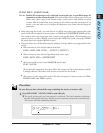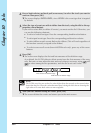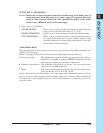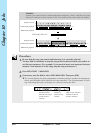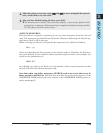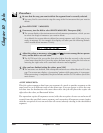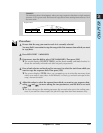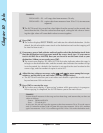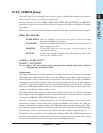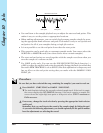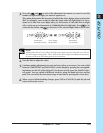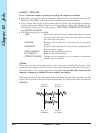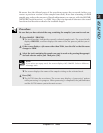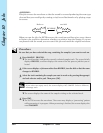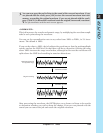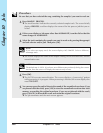
Chapter 10 Jobs 259
CHAPTER 10
10.3.5 SAMPLE Group
Use these jobs to set a sample’s start or end point, to modify the sample waveform in
any of various ways, or to delete a waveform.
Several of these jobs (the TRIM, FREQ CONVERT, BIT CONVERT, and DELETE
jobs) can be used to increase the amount of memory available for additional sample
recording.
These jobs can only be used on sample tracks that already contain recorded samples.
What The Jobs Do
START POINT Sets the sample’s start point (the point on the waveform
from which playback begins).
END POINT Sets the sample’s end point (the point on the waveform at
which playback ends).
PROCESS These jobs perform various types of processing on the
sample’s waveform.
DELETE Deletes the sample (together with all sequence data) from
the selected sample track.
SAMPLE | START POINT
SAMPLE | END POINT
Use to: Adjust the start point and end point for sample playback, without
changing the waveform itself.
Explanation
As explained elsewhere in this manual, a sample consists of a waveform, together
with start-point and end-point values. You can adjust the start point and end point to
select the span of the waveform that is played out. This makes it possible to eliminate
unnecessary material recorded at the start and end of the waveform. It also makes it
possible to adjust the sample to get the attack and length that you need. You will find
that even small adjustments to the start and end points (the start point in particular)
can have a significant affect on the sound.
Note that adjusting the start and end points simply changes the area of the waveform
that is played out; the unplayed waveform data remains in memory unless you delete
it using the SAMPLE | PROCESS TRIM job (→ p.262).
The start and end point values themselves are in units of frames, where each frame
represents a single reading along the waveform. Samples recorded at 44.1 kHz fre-
quency will consist of approximately 44,100 frames per second; reducing the differ-
ence between the start and end points by 100 units would therefore reduce the play-
back time by 1/441 second (assuming playback at the sample’s original speed).
To eliminate the possibility of an unpleasant clicking effect, the SU700 always forces
the start and end points to the nearest zero-cross point on the waveform (the nearest
location at which the waveform crosses the zero-amplitude line.)



